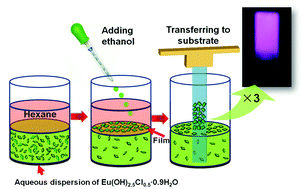Researchers synthesize material for efficient plasmonic devices in mid-infrared range
Advertisement
A research team led by North Carolina State University has identified and synthesized a material that can be used to create efficient plasmonic devices that respond to light in the mid-infrared (IR) range. This is the first time anyone has demonstrated a material that performs efficiently in response to this light range, and it has applications in fields ranging from high-speed computers, to solar energy to biomedical devices.
At issue is a phenomenon called surface plasmon resonance. This is when researchers illuminate the interface between a conducting and an insulating material. If the angle, polarization, and wavelength of the incoming light are just right, electrons in the conductor begin oscillating. This oscillation creates an intense electric field extending into the insulator that can be used in everything from biomedical sensors to solar cells or opto-electronic devices.
The wavelength of light that causes these oscillations depends on the nature of the conductive material. Materials with a high density of free electrons (like metals) respond to short wavelengths of light, such as those in the ultraviolet range. Materials with lower electron density (like conventional semiconductors) respond to long wavelengths of light, such as those in the far IR. But until now, there was a huge gap - scientists were unable to identify materials that could support efficient surface plasmon resonance when targeted with wavelengths of light in the mid-IR range (i.e., between 1,500 and 4,000 wavenumbers).
"There are at least three practical reasons for wanting to identify materials that exhibit surface plasmon resonance in response to mid-IR light," says Dr. Jon-Paul Maria, corresponding author of a paper on the work and a professor of materials science and engineering at NC State.
"First, it could make solar harvesting technology more efficient by taking advantage of the mid-IR wavelengths of light - that light wouldn't be wasted. Second, it would allow us to develop more sophisticated molecular sensing technology for use in biomedical applications. And third, it would allow us to develop faster, more efficient opto-electronic devices," Maria says.
"We've now synthesized such a material, and shown that it effectively exhibits low-loss surface plasmon resonance in the mid-IR range," Maria says. In other words, it efficiently converts mid-IR light into oscillating electrons.
Specifically, the research team has "doped" cadmium oxide with a rare earth element called dysprosium, meaning that a tiny amount of dysprosium has been added to cadmium oxide without changing the material's crystal structure.
This does two things. First, it creates free electrons in the material. Second, it increases the mobility of the electrons. Overall, this makes it easier for mid-IR light to induce oscillations in the electrons efficiently.
"Usually when you dope a material, electron mobility goes down," Maria says. "But in this case we found the opposite - more dysprosium doping increases this critical characteristic. In technical terms, our experiments revealed that Dy-doping reduces the number of oxygen vacancies in a CdO crystal. Oxygen vacancies, which correspond to locations where oxygen atoms are missing, are strong electron scatterers and interfere with electron motion. In the most basic terms, by removing these defects, electrons scatter less and become more mobile."
Original publication
E Sache, C Shelton, J Harris, B Gaddy, D Irving, S Franzen, S Curtarolo, B Donovan, P Hopkins, P Sharma, A Lima Sharma, J Ihlefeld; "Dysprosium doped cadmium oxide: A gateway material for mid-infrared plasmonics."; Nature Materials.
Other news from the department science
These products might interest you
Most read news
More news from our other portals
See the theme worlds for related content
Topic world Sensor technology
Sensor technology has revolutionized the chemical industry by providing accurate, timely and reliable data across a wide range of processes. From monitoring critical parameters in production lines to early detection of potential malfunctions or hazards, sensors are the silent sentinels that ensure quality, efficiency and safety.

Topic world Sensor technology
Sensor technology has revolutionized the chemical industry by providing accurate, timely and reliable data across a wide range of processes. From monitoring critical parameters in production lines to early detection of potential malfunctions or hazards, sensors are the silent sentinels that ensure quality, efficiency and safety.




































































